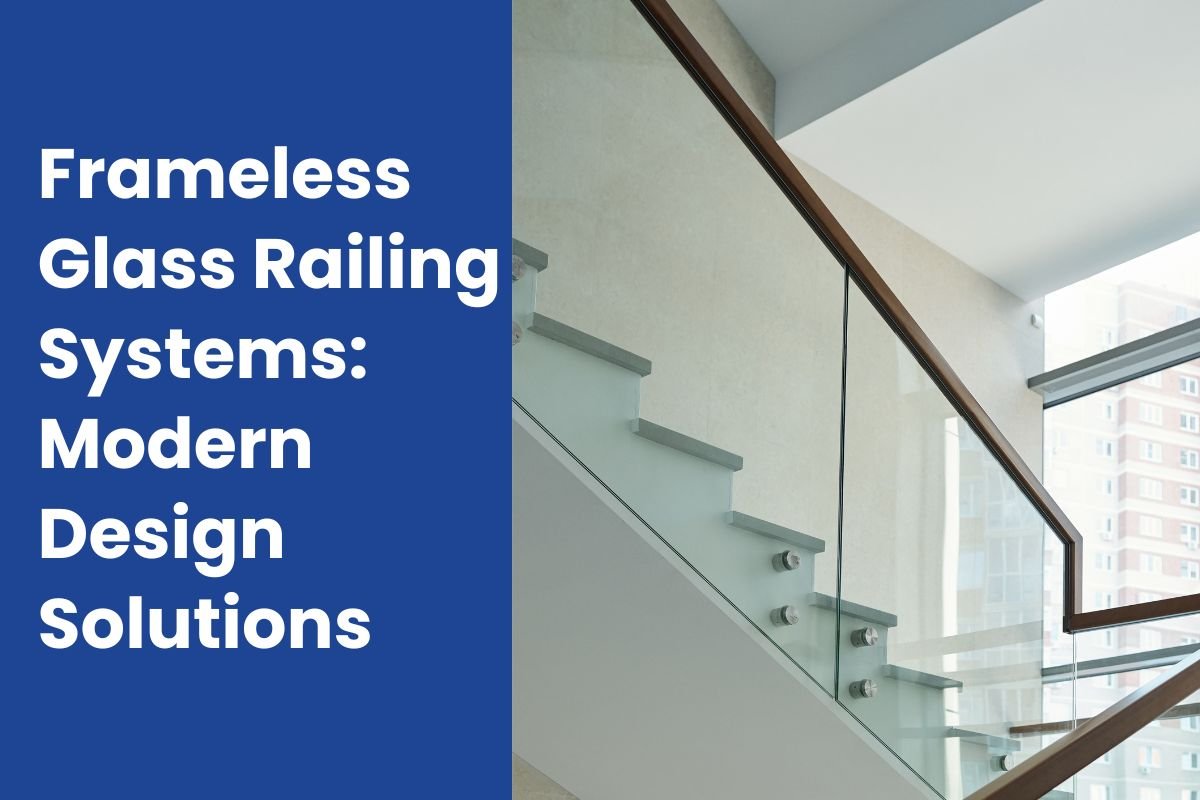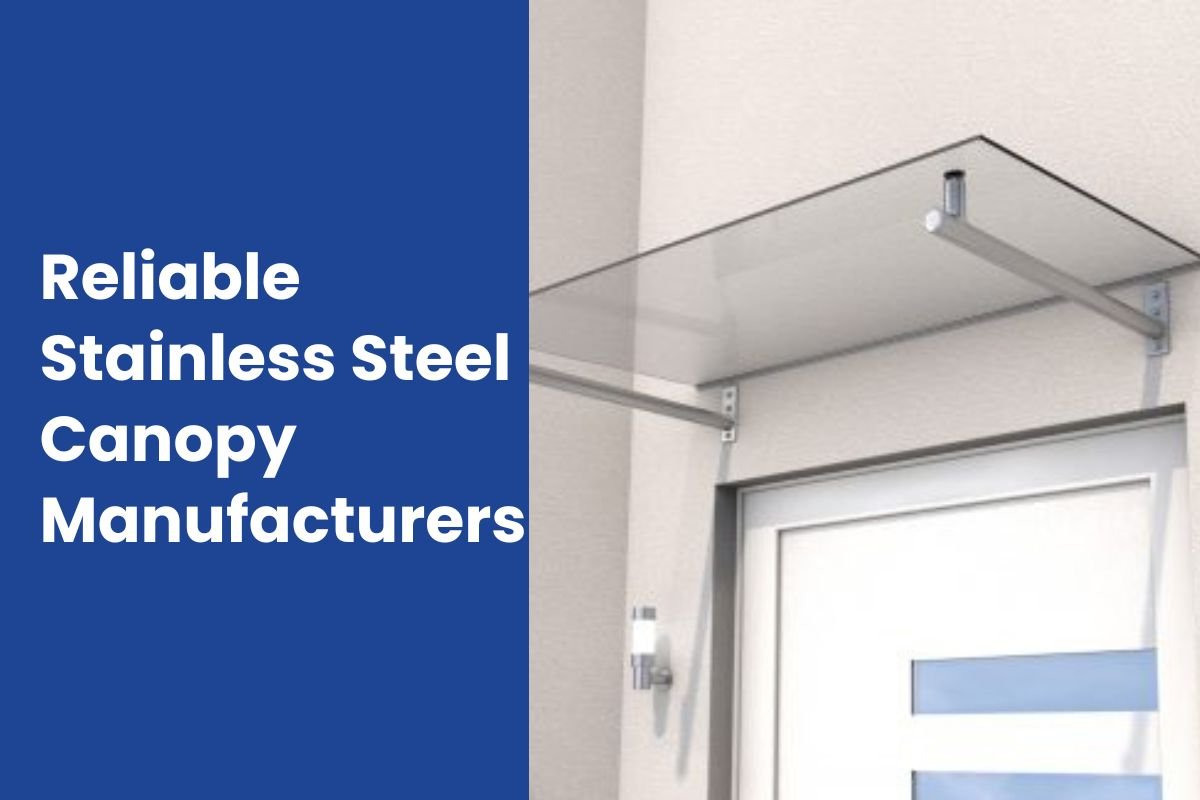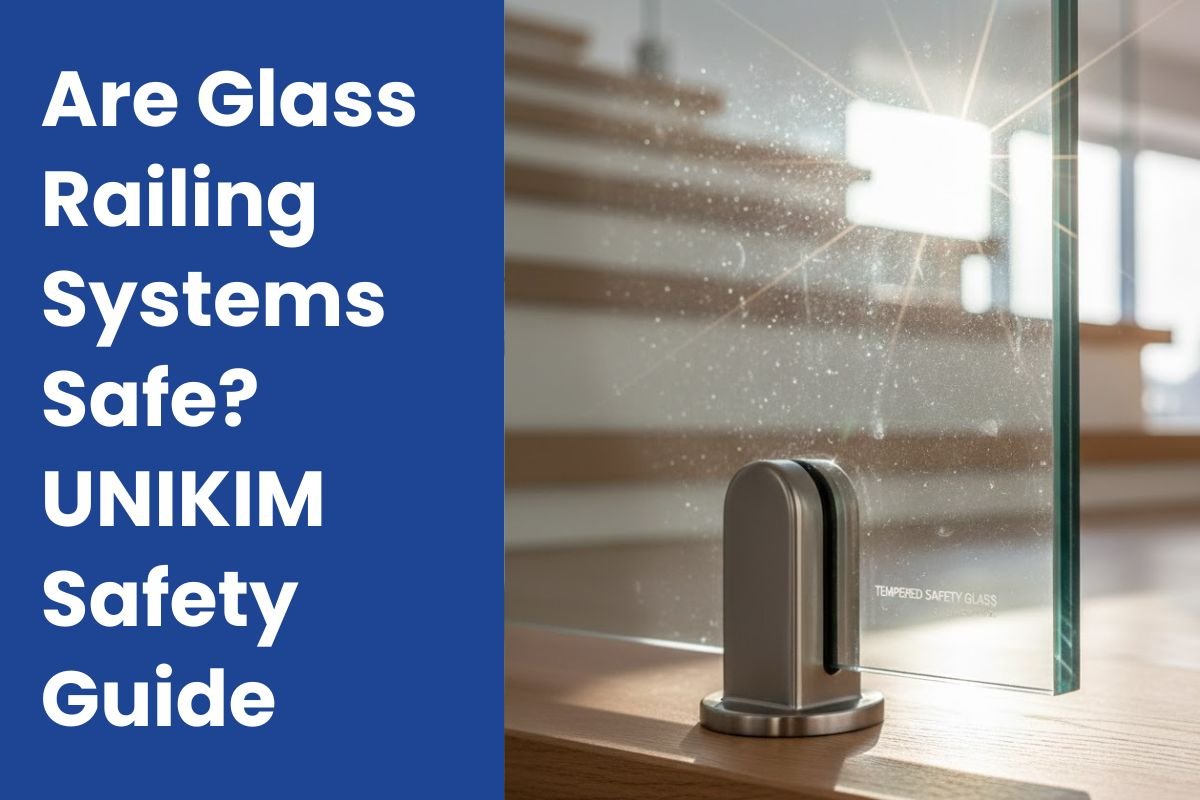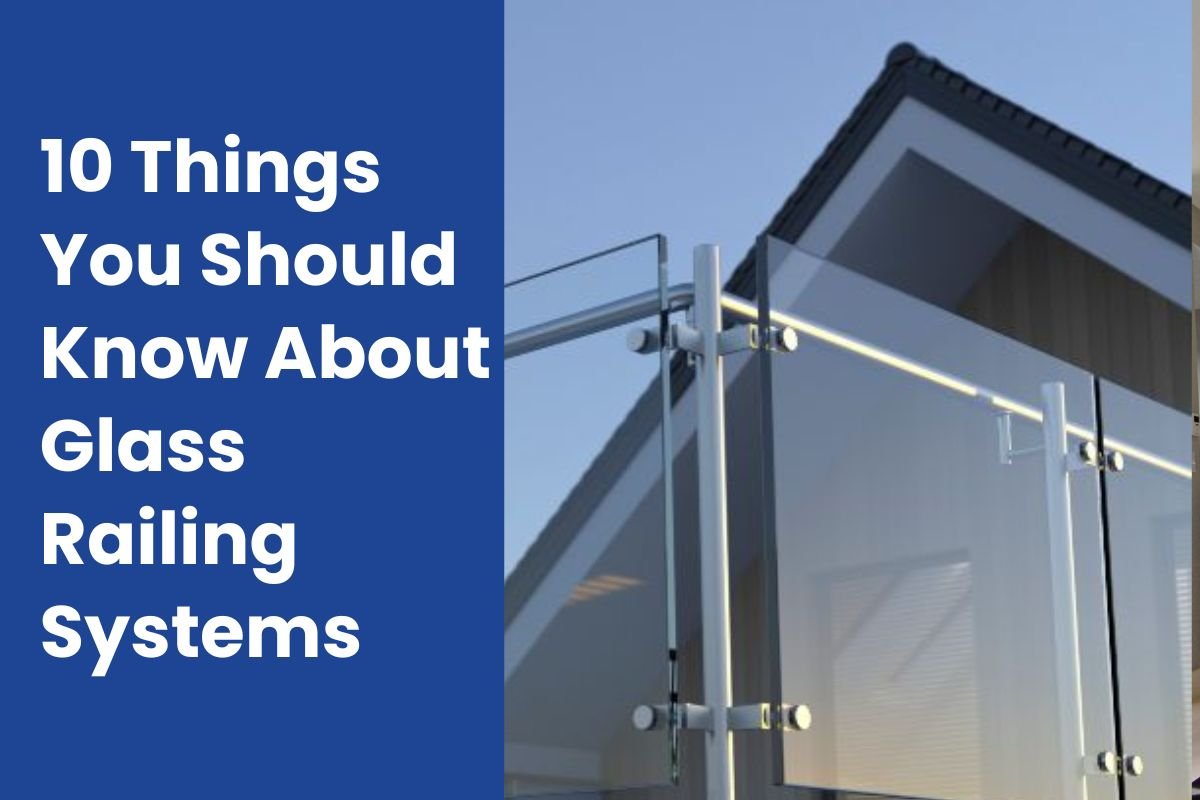The world of architectural design has witnessed a remarkable transformation in recent years, with frameless glass railing systems emerging as one of the most sought-after solutions for contemporary spaces. These innovative installations have revolutionized how we perceive boundaries, offering unobstructed views while maintaining safety and sophistication. Whether you’re designing a residential balcony, commercial building, or outdoor deck, frameless glass railing systems provide an elegant answer to modern aesthetic demands.
Frameless glass railing systems represent the pinnacle of minimalist design philosophy, eliminating bulky frames and posts to create seamless transparent barriers. Unlike traditional railing systems that interrupt sightlines with metal or wooden components, these systems use tempered or laminated glass panels secured with discreet hardware, allowing natural light to flow freely while preserving architectural integrity. The result is a clean, contemporary look that enhances property value and creates an illusion of expanded space.
The popularity of these systems has surged dramatically among architects, interior designers, and homeowners who prioritize both aesthetics and functionality. From luxury hotels overlooking scenic landscapes to urban penthouses with city views, frameless glass railings have become synonymous with modern elegance. U Railing has been at the forefront of this revolution, providing high-quality solutions that meet international safety standards while delivering exceptional visual appeal.
Understanding Frameless Glass Railing Systems
Frameless glass railing systems are architectural installations that utilize large glass panels as primary barriers without traditional top or bottom rails. The defining characteristic of these systems is their minimal hardware presence, creating an almost invisible boundary that preserves views while ensuring safety. The glass panels typically range from 10mm to 19mm in thickness, depending on application requirements and local building codes.

The construction methodology involves securing tempered or laminated glass panels using specialized mounting hardware. Base-mounted systems anchor glass directly to the floor or structural surface using channels, clamps, or standoff fittings. Post-mounted alternatives employ discreet stainless steel posts positioned at intervals, with glass panels slotting between them. Each approach offers distinct aesthetic and structural advantages, allowing customization based on project specifications.
These systems differ fundamentally from framed glass railings, which incorporate visible top and bottom rails surrounding the glass. While framed versions provide additional structural support and can accommodate thinner glass, they compromise the seamless appearance that makes frameless systems desirable. The importance of glass railing systems extends beyond aesthetics, encompassing safety, durability, and maintenance considerations that make them practical for diverse applications.
Key Components and Hardware Requirements
Understanding the components that comprise frameless glass railing systems is essential for appreciating their engineering sophistication. The glass panels themselves serve as the primary structural element, manufactured from high-grade tempered or laminated glass with polished edges.
Mounting hardware represents the critical interface between glass and structure. Base clamps grip glass panels at the bottom edge, distributing loads across the mounting surface. These clamps come in various profiles, including square, round, and custom designs that complement different architectural styles. Standoff fittings create space between glass and mounting surface, allowing for drainage and thermal expansion while maintaining secure attachment.
For post-mounted systems, stainless steel posts provide vertical support at designated intervals. These posts are typically fabricated from marine-grade stainless steel (304 or 316) to resist corrosion in outdoor environments.
Handrail options for frameless systems include aluminum or stainless steel cap rails mounted atop glass panels, or glass-only configurations where the polished top edge serves as the handhold surface. When cap rails are used, they’re secured with minimal hardware to maintain the frameless aesthetic. Glass railing systems from quality manufacturers include all necessary components with precise engineering specifications.
Gaskets and spacers play crucial roles in system performance. Rubber or silicone gaskets cushion glass panels within hardware, preventing direct glass-to-metal contact that could cause stress concentrations.
Design Versatility and Aesthetic Advantages
The aesthetic flexibility of frameless glass railing systems allows them to complement virtually any architectural style. Contemporary minimalist designs benefit from the clean lines and transparent barriers that emphasize geometric purity. The absence of visual clutter created by traditional railings allows architectural features to speak for themselves, creating harmonious spaces where form and function merge seamlessly.
Urban environments present unique opportunities for frameless glass applications. Rooftop terraces and balconies in metropolitan settings can maximize city views through transparent barriers that create safe perimeters without blocking skylines.
The benefits of custom glass railing designs become apparent when addressing specific project requirements. Curved installations follow architectural contours, creating flowing transitions between spaces. Custom height specifications accommodate varying building codes and design preferences. Tinted or frosted glass options provide privacy while maintaining light transmission, perfect for residential applications where seclusion is desired without complete enclosure.
Interior applications showcase the space-enhancing properties of frameless glass railings. Staircase installations allow light to penetrate multiple levels, creating airy environments that feel larger and more connected. Mezzanine railings maintain visual continuity between floors, preventing the segmented feeling that opaque barriers create.
Safety Standards and Building Code Compliance
Safety considerations govern every aspect of frameless glass railing systems design and installation. International Building Codes (IBC) and local regulations establish minimum requirements for railing height, glass strength, and structural performance. In most jurisdictions, residential railings must be at least 36 inches high, while commercial applications typically require 42-inch minimum heights. These specifications ensure adequate protection against falls while accommodating various user scenarios.
Glass strength requirements mandate the use of tempered or laminated glass for railing applications. Tempered glass must meet ASTM C1048 standards, demonstrating adequate impact resistance and breakage characteristics. Laminated glass assemblies bond multiple glass layers with polyvinyl butyral (PVB) or similar interlayers, creating redundant safety systems that maintain barrier integrity even if one layer fails. The durability of tempered frameless glass railings has been extensively tested and documented.
Load testing protocols verify that installed systems can withstand specified forces. Standard tests include horizontal load applications simulating human impact, concentrated loads representing focused forces, and uniform loads across entire panel areas.
Guardrail infill specifications address the spacing and sizing requirements that prevent hazardous conditions. The “4-inch sphere rule” common in many building codes requires that openings not permit the passage of a 4-inch diameter sphere, preventing small children from passing through or becoming trapped.
Understanding how glass railing systems work from a safety perspective involves recognizing the redundant protection layers built into quality installations.
Installation Process and Professional Considerations
The installation of frameless glass railing systems requires specialized expertise and precision measurement. Pre-installation site assessment identifies structural conditions, verifies mounting surface integrity, and confirms that dimensional specifications match design documents. Substrate evaluation determines appropriate anchoring methods, with concrete, wood, and steel surfaces each requiring specific fastening approaches. Professional installers from reputable suppliers bring the tools and knowledge necessary for successful installations.
Layout and marking procedures establish precise locations for posts, base channels, and mounting hardware. Laser levels ensure that installations remain plumb and level across entire railing runs, preventing the cumulative errors that manual methods can introduce.
Anchoring and mounting processes vary by system type and substrate. Core drilling creates clean holes for chemical anchors or expansion bolts, providing robust attachment points capable of withstanding substantial loads.
Glass panel installation represents the most delicate phase of the process. Panels must be handled with specialized suction equipment to prevent damage and ensure worker safety. Setting blocks or shims establish proper panel height and alignment before hardware is tightened.
Quality control inspections verify that completed installations meet engineering specifications and building codes. Installers check hardware torque values, confirm proper gasket seating, and verify that all fasteners are secure.
Maintenance Requirements and Long-Term Care
Maintaining frameless glass railing systems ensures lasting beauty and structural integrity. Routine cleaning procedures involve washing glass panels with mild soap solutions and soft cloths or squeegees. Harsh chemicals, abrasive cleaners, and rough materials should be avoided as they can scratch glass surfaces or damage hardware finishes.
Hardware inspection protocols identify loose fasteners, damaged gaskets, or corroded components before they compromise system performance. Quarterly visual inspections examine mounting hardware for signs of movement or degradation.
Weather protection strategies extend system lifespan in challenging environments. Stainless steel hardware benefits from occasional application of specialized cleaners that remove surface contaminants and restore passive oxide layers that resist corrosion. In coastal areas, regular freshwater rinsing removes salt deposits that accelerate degradation.
Glass surface treatments can enhance performance and reduce maintenance requirements. Hydrophobic coatings cause water to bead and sheet off glass surfaces, reducing water spotting and mineral deposit formation. The pros and cons of frameless glass railing include maintenance considerations that should inform product selection.
Professional maintenance services provide comprehensive care for large or complex installations. Experienced technicians bring specialized equipment and knowledge to address issues that exceed typical property owner capabilities. Annual professional inspections document system condition, identify developing problems, and perform preventive maintenance that extends service life. For commercial properties, establishing maintenance contracts ensures consistent care and creates documentation that supports liability protection efforts.
Cost Considerations and Return on Investment
The investment in frameless glass railing systems varies significantly based on project scope, materials selected, and installation complexity. Material costs for high-quality tempered glass panels typically range from $75 to $150 per square foot, depending on thickness, finish options, and order quantities. Hardware components add $50 to $100 per linear foot, with premium finishes and custom designs commanding higher prices. These figures represent quality products from established manufacturers that meet international standards.
Installation expenses reflect the specialized expertise required for proper system installation. Professional installation typically adds 30% to 50% to material costs, with complex projects involving curves, variable heights, or challenging site conditions requiring additional investment.
Comparative analysis against alternative railing systems reveals the value proposition of frameless glass solutions. Traditional metal railings may cost 40% to 60% less initially but lack the aesthetic appeal and view preservation that glass provides.
Property value enhancement through frameless glass railing installation often exceeds the initial investment. Real estate professionals consistently identify quality glass railings as high-impact improvements that attract buyers and support premium pricing.
Long-term cost efficiency emerges through minimal maintenance requirements and exceptional durability. While initial investment exceeds that of traditional alternatives, frameless glass railings eliminate painting, staining, and periodic replacement cycles associated with wood or metal systems.
Applications and Project Examples
Residential deck and balcony installations represent the most prevalent application for frameless glass railing systems. Homeowners increasingly recognize these systems as ideal solutions for protecting outdoor living spaces while preserving views.
Waterfront properties and pool surrounds leverage glass railings to maximize water views while ensuring safety compliance. Marina walkways, boat docks, and shoreline paths benefit from corrosion-resistant installations that withstand constant moisture exposure.
Commercial and hospitality venues deploy frameless glass railings to create memorable guest experiences. Hotel balconies with scenic overlooks use glass barriers to preserve marketable views that justify premium room rates. Restaurant terraces employ glass railings to protect diners while maintaining the open atmosphere that enhances dining experiences.
Staircase and mezzanine applications showcase glass railings’ ability to maintain visual continuity across vertical spaces. Modern homes with open floor plans use glass stair railings to preserve sightlines between levels, preventing the visual fragmentation that traditional railings create.
Public infrastructure projects increasingly specify frameless glass railings for pedestrian bridges, observation decks, and transit facilities. These installations withstand heavy use while maintaining appearance with minimal maintenance, crucial considerations for public agencies with limited maintenance budgets.
Customization Options and Design Flexibility
The customization potential of frameless glass railing systems allows precise alignment with architectural vision. Glass thickness selections range from 10mm for protected interior applications to 19mm for exposed exterior installations subject to wind loads. Thickness affects transparency subtly, with thicker panels exhibiting slightly increased color tint visible when viewing edge-on. Structural requirements and budget considerations guide thickness selection, with professional glass railing suppliers providing engineering support.
Tinting and coating options modify glass appearance and performance characteristics. Gray and bronze tints reduce solar heat gain while providing privacy screening suitable for residential applications.
Edge treatments affect both safety and aesthetics. Flat polished edges create clean, modern profiles suitable for contemporary designs. Beveled edges add dimensional interest, catching light to create subtle visual effects. Seamed edges represent economical options where edges remain largely concealed within hardware.
Hardware finish selections coordinate glass railings with broader architectural palettes. Brushed stainless steel provides neutral, contemporary appearance suitable for diverse applications. Polished finishes create more formal, reflective surfaces that complement luxury environments.
Curved and angular configurations demonstrate the adaptability of frameless glass systems to complex geometries. CNC cutting technology produces panels following virtually any curve, allowing railings to trace circular stairs, curved balconies, or free-form architectural features.
Comparing Frameless vs. Framed Glass Systems
The distinction between frameless and framed glass railing systems influences both aesthetics and functional performance. Visual impact differences are immediately apparent, with frameless systems creating nearly invisible barriers that maximize view preservation. Framed systems incorporate aluminum or stainless steel channels surrounding glass perimeters, creating visible borders that interrupt sightlines.
Structural considerations reveal engineering trade-offs between approaches. Framed systems distribute loads through perimeter frames, allowing use of thinner glass panels and reducing material costs. The continuous frame support enables longer spans between posts, potentially reducing hardware quantities.
Installation complexity differs between system types. Framed railings involve assembling frame components and installing glass within channels, typically requiring gaskets and setting blocks. The frame provides some tolerance for dimensional variations, simplifying field adjustments. Frameless installations demand greater precision, with glass panels fabricated to exact dimensions and hardware positioned accurately.
Maintenance requirements favor frameless configurations in most environments. The absence of frame channels eliminates debris accumulation zones that require periodic cleaning. Fewer component interfaces mean fewer potential water intrusion points and reduced corrosion risks. Framed systems require attention to frame channels, gaskets, and numerous fasteners, increasing long-term maintenance effort.
Cost implications generally favor framed systems for budget-conscious projects. Material costs for framed railings typically run 20% to 30% lower than frameless equivalents, primarily due to thinner glass specifications. Installation costs may also be reduced through simplified procedures and greater dimensional tolerance. The pros and cons of frameless glass railing merit careful evaluation against project priorities.
Weather Resistance and Outdoor Performance
The outdoor performance of frameless glass railing systems depends on proper material selection and installation practices. Wind load resistance represents a primary design consideration for exposed installations. Glass panels must resist sustained wind pressures and instantaneous gusts without exceeding deflection limits or ultimate strength thresholds.
Temperature cycling effects cause dimensional changes in both glass and hardware components. Glass exhibits relatively low thermal expansion, approximately 0.000005 inches per inch per degree Fahrenheit, but this movement becomes significant across large panels experiencing substantial temperature swings.
Moisture and humidity management protects against several degradation mechanisms. While glass itself resists moisture, hardware components face corrosion risks, particularly in coastal environments or regions using deicing salts.
UV radiation exposure affects some system components over extended periods. Glass transmits UV radiation without degradation, maintaining clarity indefinitely. Gasket materials vary in UV resistance, with inferior formulations becoming brittle and cracking within years. Quality systems specify UV-stabilized gaskets that maintain performance for decades.
Salt spray and marine environments present the most challenging conditions for outdoor glass railings. Salt particles accelerate corrosion of susceptible metals, with repeated wetting and drying cycles compounding effects. Projects in coastal zones within one mile of saltwater should specify 316 stainless steel for all hardware components.
Integration with Modern Smart Home Technology
The intersection of frameless glass railing systems with smart home technology creates innovative possibilities for enhanced functionality. LED lighting integration transforms railings into architectural lighting features. LED strips mounted beneath handrails or within base channels illuminate glass edges, creating dramatic nighttime effects.
Sensor integration enables automated responses to environmental conditions. Wind sensors can trigger alerts when conditions exceed safe limits for rooftop or elevated deck areas. Occupancy sensors detect when railings areas are in use, activating lighting automatically.
Privacy glass technology offers dynamic opacity control through electrochromic or suspended particle device (SPD) glass. These technologies switch between transparent and translucent states through electrical control, providing instant privacy without mechanical shades or curtains.
Monitoring systems track glass railing condition through embedded sensors. Stress sensors detect unusual loading conditions that might indicate attempts to circumvent security or structural degradation requiring attention.
Control integration with whole-home automation systems enables coordinated functionality. Voice commands through popular platforms can control railing lighting, adjust privacy glass opacity, or query sensor data.
Addressing Common Installation Challenges
Successful frameless glass railing systems installation requires addressing several predictable challenges. Substrate condition issues frequently arise when existing structures lack sufficient strength or levelness for proper mounting. Concrete surfaces may require repair of spalls, cracks, or deteriorated areas before hardware installation. Wood deck framing might need reinforcement to handle concentrated loads from glass railings. Steel substrates may require additional welding or plate installation to create adequate mounting surfaces. Thorough pre-installation assessment identifies these issues before installation commences.
Dimensional accuracy requirements exceed those of many construction disciplines. Glass panels fabricated to precise dimensions won’t accommodate framing that’s out of square or posts positioned incorrectly
Weather dependency complicates project scheduling and completion. Rain during installation can compromise epoxy curing or make surfaces too slippery for safe work. Extreme temperatures affect sealant performance and worker safety. Wind creates hazards when handling large glass panels, increasing breakage risk and making precise positioning difficult.
Access limitations at some project sites constrain equipment use and material delivery. High-rise installations may require crane rental for glass panel delivery to upper floors. Narrow side yards limit equipment access at residential properties. Interior installations must navigate stairs and doorways sized for typical construction materials, not large glass panels.
Coordination with other trades ensures that glass railing installation integrates smoothly with overall project schedules. Electrical rough-in for railing lighting must occur before glass installation. Waterproofing membranes require completion before base channel mounting penetrates these barriers. Finish flooring installation timing affects base shoe details and overall appearance.
Future Trends and Innovation in Glass Railing Design
The evolution of frameless glass railing systems continues through material science advances and design innovation. Structural glass improvements focus on increasing strength while reducing thickness. Research into chemical strengthening processes beyond traditional tempering promises glass with superior impact resistance and reduced weight.
Minimalist hardware evolution pursues ever-more-discreet mounting systems. Point-fixed solutions using individual standoffs continue shrinking in profile, with some designs nearly invisible from typical viewing distances. Adhesive technologies offer potential for hardware-free attachment, though achieving required structural performance while maintaining long-term bond integrity remains challenging. As hardware becomes less visible, the frameless aesthetic approaches its ultimate expression of pure glass barriers.
Sustainable manufacturing initiatives address the environmental impacts of glass production. Solar-powered manufacturing facilities reduce operational carbon footprints. Increased recycled content in glass composition continues expanding, with some manufacturers achieving 40% or higher post-consumer content.
Digital design tools revolutionize how architects and designers specify glass railings. Building Information Modeling (BIM) integration allows virtual railing installation within comprehensive building models, identifying conflicts and optimizing designs before construction begins.
Multifunctional integration expands glass railing capabilities beyond pure barrier function. Research into photovoltaic glass could transform railings into electricity generators, though current technology efficiency and cost limits practical applications. Property owners interested in cutting-edge solutions should consult experienced suppliers about emerging technologies appropriate for their projects.
Advantages of Frameless Glass Railing Systems
Frameless systems aren’t just about looks — they deliver real-world benefits that outshine traditional options.
1. Unobstructed Views
The most obvious perk is the seamless visibility. Whether you’re gazing at a city skyline or a scenic coastline, frameless glass railings ensure nothing blocks your view.
2. Modern Aesthetic Appeal
They’re minimal, clean, and sophisticated. Perfect for both modern homes and commercial interiors seeking that “wow” factor.
3. Low Maintenance
Glass is surprisingly easy to maintain. Regular cleaning with mild detergent keeps it spotless and crystal clear. No rusting, repainting, or staining like metal or wood.
4. Durability & Strength
Frameless systems use tempered safety glass, which is up to five times stronger than regular glass. With proper installation, these systems last decades without losing clarity or strength.
5. Versatility in Design
They can be fully customized — choose clear, frosted, tinted, or even etched glass for privacy or branding. For more on customization, explore the benefits of custom glass railing designs.
6. Increased Property Value
Adding frameless glass railings instantly boosts curb appeal and resale value — a smart investment for both homes and businesses.
For a detailed breakdown of pros and cons, uRailing’s expert comparison guide offers a helpful overview.
Why Choose uRailing for Frameless Glass Railing Systems?
If you’re considering installing Frameless Glass Railing Systems, partnering with a trusted supplier is essential. uRailing stands as a leader in quality, innovation, and service.
Here’s why they stand out:
- Decades of expertise in glass railing engineering.
- Superior materials sourced for durability and safety.
- Full customization options — from glass type to hardware finish.
- Affordable pricing with global delivery.
- Exceptional after-sales support and installation guidance.
Discover more at uRailing’s official website.
Wrapping It Up
Frameless Glass Railing Systems are more than just a design trend — they’re a testament to how modern architecture values transparency, strength, and elegance. Whether for a home balcony or a corporate atrium, these systems enhance aesthetics while ensuring maximum safety.
If you’re ready to elevate your space with timeless beauty and robust engineering, explore uRailing’s exclusive glass railing solutions.
Your dream view deserves nothing less than perfection — and frameless glass railings deliver exactly that.
FAQs
Q1: Are frameless glass railings safe for high-rise buildings?
Absolutely. They use tempered or laminated glass that meets international safety standards.
Q2: Can I customize the glass color or opacity?
Yes. uRailing offers tinted, frosted, and etched options.
Q3: Do frameless systems require regular maintenance?
Only minimal cleaning — glass doesn’t rust or corrode like metal railings.
Q4: How long does installation take?
Typically 3–5 days for residential projects, depending on size and complexity.
Q5: Where can I order or get a quote?
Visit uRailing’s Contact Page for inquiries and personalized assistance.

